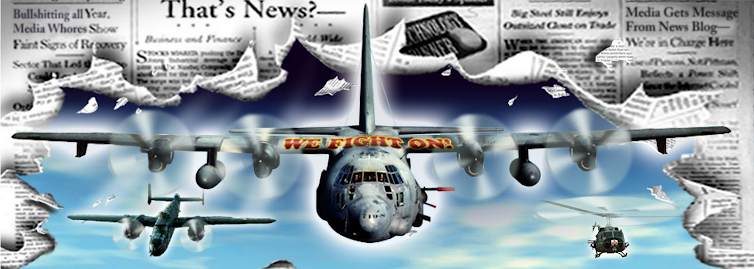 Film still from Franklin J. Schaffner's “The Best Man”—1964 from United Artists.
Film still from Franklin J. Schaffner's “The Best Man”—1964 from United Artists.
“The Walk Through”
As noted downpage, I assisted the gator-ific one and “Tokyo Terri” (one of my favorite commenters here and a damned hard worker for progressive causes on the internets in her own right) a little bit with their impromptu video “get” of Dr. Howard Dean for the “Unofficial Netroots Nation Podcast” down here in Austin.
One minute I was at our table watching Gen. Wesley Clark winding up his speech in rollicking fashion and the very funny Baratunde Thurston who bridged the speakers with some hilarious and pointed political stand-up, and the next minute, there was an advance person/assistant to Dr. Dean appearing magically in a puff of burnt Orange Netroot smoke, quickly informing T and Gator that “The Fifty-State Strategy Man” was now miraculously available for the interview—but...it would have to be quick and and an “on a dime turn-about” would be required as he was scheduled next at the podium to speak.
What followed was the “art-y” part. As the video camera being used was a relatively new-ish one, it was still in the process of being set-up which when under time constraints can only cause problems, thus, I volunteered my help with that, being an inveterate A/V geek and suddenly, we were off—out of the main hall and being led down the corridor where another very important person with a walkie-talkie awaited near a closed door. We were quickly ushered in, and then...an eerie feeling of dejá vu kicked in.
I don't know if you've ever seen the 1964 film “The Best Man”,, starring Henry Fonda (and if you haven't—you should. It'll be on Turner Classic Movies Aug. 24th @ 12 a.m. and on Sept. 3rd @ 12:15 a.m.) as the earnest, honest-to-a-fault “William Russell”, a clearly liberal candidate for president, with of course, the one tragic flaw—he'd been institutionalized for a nervous breakdown some time before, and it had also damaged his marriage. His opponent was Cliff Robertson's “Joe Cantwell”, a feral attack dog of a right-winger who'll stop at nothing to get elected—and he too, has a secret, as he'd apparently engaged in...ahem!, “The love that dares not speak its name” while in the army during WW2. The movie (Based on Gore Vidal's hit Broadway Play) is one of the best filmed treatments of the modern political game, focusing on the unseen glad-handing, horse-trading, hypocrisy, conventioneer-ing, and all manner of back-room dealing innate to the “game”. It was lensed in that stark “Manchurian Candidate” black and white style on location in the guts and bowels of the old Ambassador Hotel in Los Angeles (where RFK would be killed a mere four years later), and the film is chock-full of these odd, shadowy back-of-the-building shots—tall unused ballrooms and long, echoing gray corridors, piping and ducts and all of the unglamorous building innards where the main characters skulked and plotted and met from time to time to measure each other like street-bred dogs facing off.
We were led through just such a labyrinth of rooms and corridors on our way to Dr. Dean. It was eerie. The rooms and hallways were a deep, stoney gray, with more echo than a Tommy James & The Shondells record. The occasional bark of a walkie-talkie could be heard as we were led left, right...Then left again and once again right to meet with and interview the former governor.
It looked exactly like that creepy, cavernous maze of rooms they shot “The Best Man” in. I kept waiting for the movie's director, to rise suddenly on the end of a big Chapman crane and yell “Cut!”. But this wasn't a movie. It was quite real.
We got to Dr. Dean, but of course the camera was balky and we missed that opportunity, but were granted a second chance after his speech, which came rather quickly.
He was ebullient, affable and as down-to-earth as could be. You couldn't help but notice his real fondness for the politically activated folks on the internet. He doesn't say “No” when people approach him—which for the thankless jobs of handlers and assistants, understandably makes them a little bit crazy. There are schedules and appearances to be maintained, and when you have a garrulous and open person like him to hold to the “every second counts” level of getting about, it can be difficult. (Bill Clinton is also notorious for this—even moreso in fact.) Nevertheless, good cheer was maintained and the interview went well.
But I couldn't help but notice those surroundings on our way to interview him. There was no magic, donut-stuffed green room or make-up people wielding puffs and powders and the like. It was furtive hustling about, no glamour. You run, you brief one another—it is on the fly. Big gray rooms and chugging forklifts. Echoing halls and harsh fluorescent lights. Barking, squalling walkie-talkies and the crispy sound of handlers necks snapping from repeatedly whipping downward to check watches and back up at their person.
What you see up front on CNN and MSNBC, the talking head perfectly centered before a green screen where a DC backdrop is popped in is the end result.
The guts is all the rushing to and fro through cavernous hallways, past kitchens and loading bays.
Got a chance to experience a little bit of the political game up close...back rooms and all.
Amazing stuff. And real.

Saturday, July 19, 2008
Life Imitates Art
LowerManhattanite 1:43 PM
Labels: Howard Dean, Media, Movies, Netroots nation, Politics
Subscribe to:
Comment Feed (RSS)




|